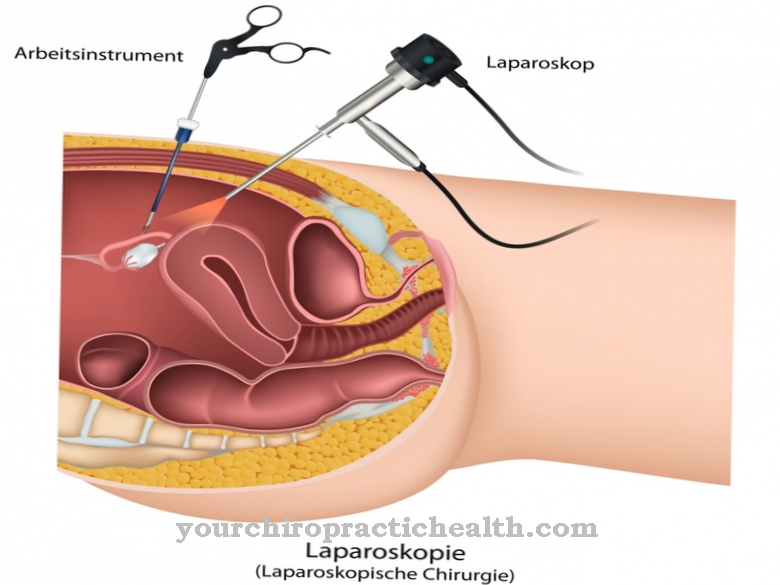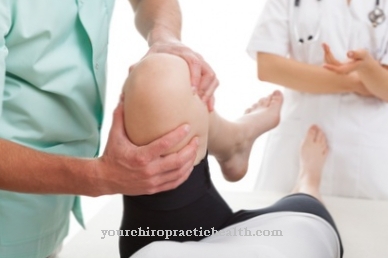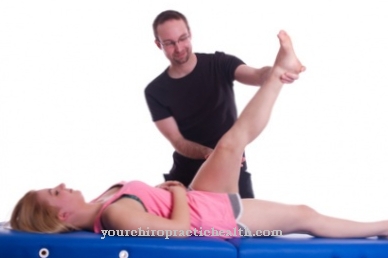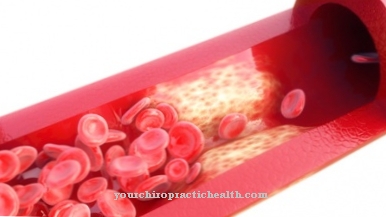As part of a Electrotherapy Electric current is used for therapeutic purposes. The applied current, frequency and pulse width depend on the underlying symptoms. In most cases, electrotherapy is an accompanying measure to the treatment of the underlying disease.
What is electrotherapy?

The physiotherapeutic or medical application of electrical current is called Electrotherapy As a rule, refers to and aims to relieve pain, improve impaired joint and muscle functions, and optimize blood flow and thus the trophics (supply and metabolic status) of the treated tissue.
Depending on the specific disease or the individual symptoms, different frequencies (galvanic, low, medium, high-frequency current) are used therapeutically in different areas of the body. The most frequently used methods are galvanotherapy, in which direct current is used, low-frequency electrical stimulation therapy and high-frequency short-wave therapy.
Electrotherapy is used in particular in the case of pain syndromes of the musculoskeletal system, spinal changes caused by wear, muscular tension and strains, weakened or paralyzed muscles and incontinence due to impairment of the bladder or pelvic floor muscles.
Function, effect & goals
By means of electrical stimuli, the Electrotherapy Nerve reactions are triggered, which contribute to pain relief as well as improvement of the blood circulation and functionality of disturbed muscle areas. The mode of action depends on the specifically chosen electrotherapy method, which in turn correlates with the underlying symptoms or illness.
What is fundamental, however, is the conductivity of the human organism, which is guaranteed by the blood and lymph systems, the cerebrospinal fluid, the urine and the organs and muscles. As a rule, accumulators or batteries are used as power sources. As part of galvanic electrotherapy with direct current (0 Hz), the positive and negative ions (electrically charged particles) moving in the same direction through the body relieve pain symptoms, whereby plate electrodes or partial or full hydroelectric baths (Stangerbad) the direct current is transmitted to the organism.

In addition, blood circulation and metabolism (especially cell growth and division) are promoted in the treated area, which supports healing. Electrotherapy with low-frequency electrical stimulation (1 to 1000 Hz) stimulates muscle and nerve fibers, which causes the muscles to contract first and then to relax. This form of therapy is used in particular for partially paralyzed or weakened muscles (muscle atrophy) to ensure their function and avoid further weakening, with differently low frequencies being used depending on the stage of the disease.
Transcutaneous electrical nerve stimulation (TENS for short) is a special form of treatment for musculoskeletal pain in the case of neuralgia or tumor pain if the cause of the symptoms cannot be eliminated. The affected person can independently regulate the current strength, frequency (up to 200 Hz) and pulse width (up to 0.5 s), which are conducted into the organism via electrodes over the painful areas. Medium-frequency interference or alternating current (1000 to 100,000 Hz) is used to relieve pain and / or to stimulate muscle activity.
The increased blood circulation also relaxes the muscles and reduces swelling (especially edema). The high-frequency or short-wave therapy (over 100,000 Hz) causes the deeper localized tissue to warm up, which also has a pain-relieving effect and stimulates blood circulation. This form of electrotherapy is primarily used for impairment of the musculoskeletal system and the respiratory tract (chronic bronchitis).
You can find your medication here
➔ Medicines for painRisks & dangers
Risks, side effects or dangers result from a Electrotherapy from improper use. Too high a dosage can, for example, lead to skin damage and impaired blood flow and to sensory and cardiac arrhythmias.
In particular, low-frequency electrical stimulation therapy can lead to burns in the areas in which electrodes contact the skin, which is why a moist sponge should be used to protect the skin, for example. High-frequency electrotherapy in the area of the uterus is also contraindicated in the presence of pregnancy, as there is an increased risk of fetal or embryonic malformations (so-called teratogenic or teratogenic effect).
In addition, electrotherapy should not be applied if diseases such as cardiac arrhythmias, acute inflammations, thromboses (blood clots), open skin areas, arteriosclerosis or other arterial circulatory disorders are evident. In addition, electrotherapy with metals in the person's body (e.g. joint prostheses such as knee endoprostheses) and pacemakers are excluded.
In addition, there is a contraindication for malignancies (malignant tumor diseases), haemophilia (increased tendency to bleed) and febrile disease processes. For people who are afraid of electricity, an alternative to electrotherapy should also be considered.













.jpg)

.jpg)
.jpg)











.jpg)